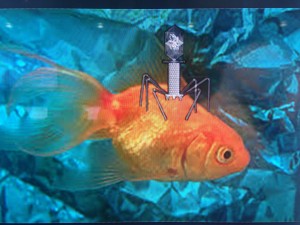So our last lab for this semester has come and gone. And making smores is an awesome tradition for the last day! And now that Bonesquad is shipped of and in the data banks, all that is left to do is to analyze the bands on the electrophoresis!
So I said in my last blog that I found a study in a Smithsonian magazine that was super cool so I thought I would summarize it for y’all. This was a study published in 2007 by Yale’s Infant Cognition Center. This study was attempt to tackle the question of wether or not humans are wired to know the difference between good and evil (or lesser good), or if the concept of good is like anything else, just a skill we pick up along the way.
The test was performed on 6 and 10 month old infants. A group of these kids were shown a puppet show which had this story line:
There was a bunny that was struggling to open a box. Then along came a bunny in a purple shirt. The bunny in the purple shirt held the box down and prevented the original bunny from opening the box. The next scene was similar. The same bunny was trying to open the box and another bunny came along in a green shirt and aided the original bunny and together they opened the box!
This scenario was played over several times for the kids to ensure that they understood what had happened. Then following the last showing of the play, they had a chance to meet the bunnies of the story! When they met the bunnies, both the bunny in the purple and green shirt offered each infant a cracker, but could only take one. While the magazine didn’t give exact percentages, they did say the kids “overwhelmingly” choose the cracker from the bunny in the green shirt.
While of course this offers no concrete evidence, (because what if the good bunny offered a cracker while the “bad” offered a cookie?) it does kind of point towards the idea that the knowledge of goods is something humans might be born with.

